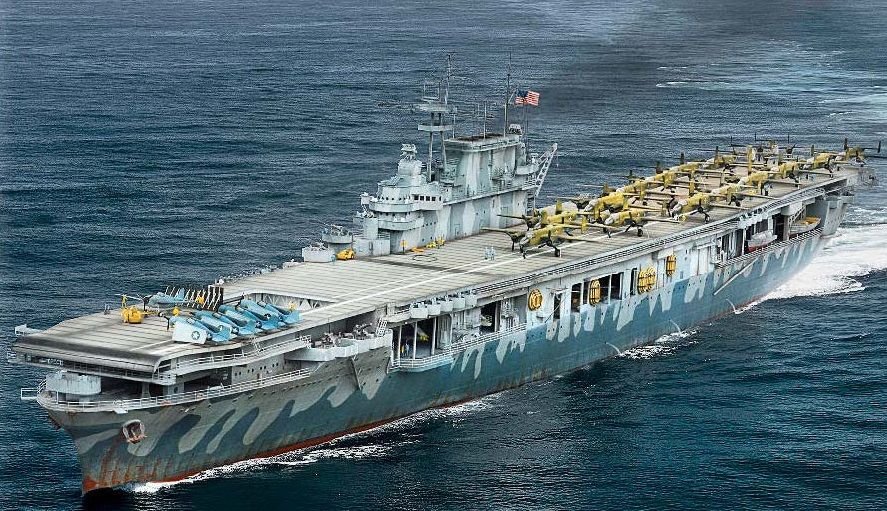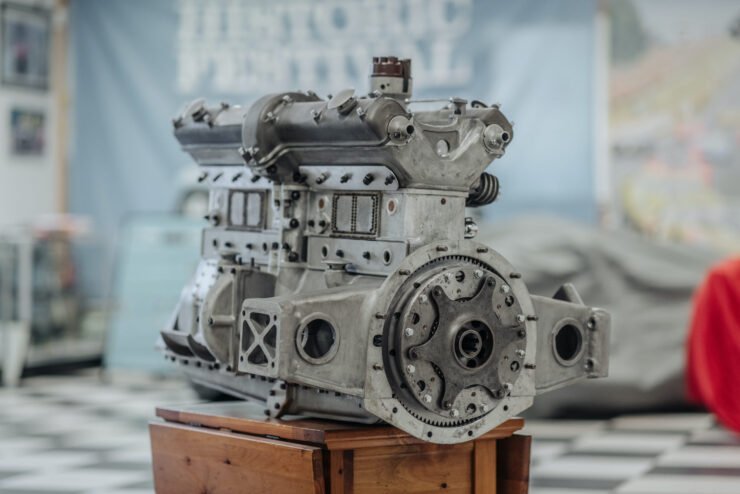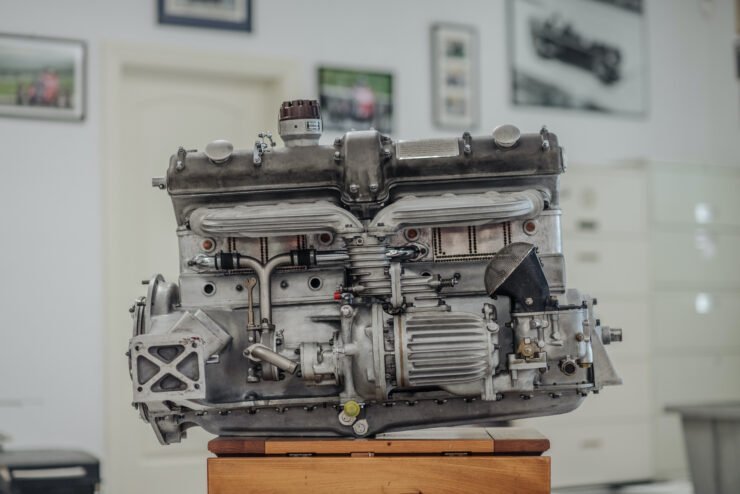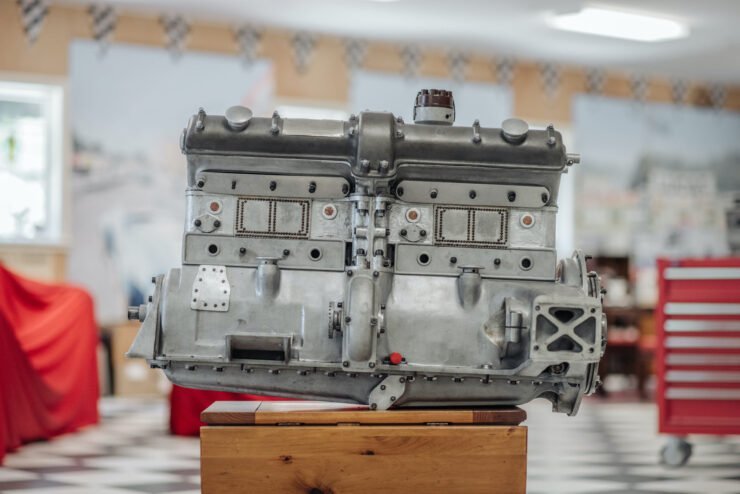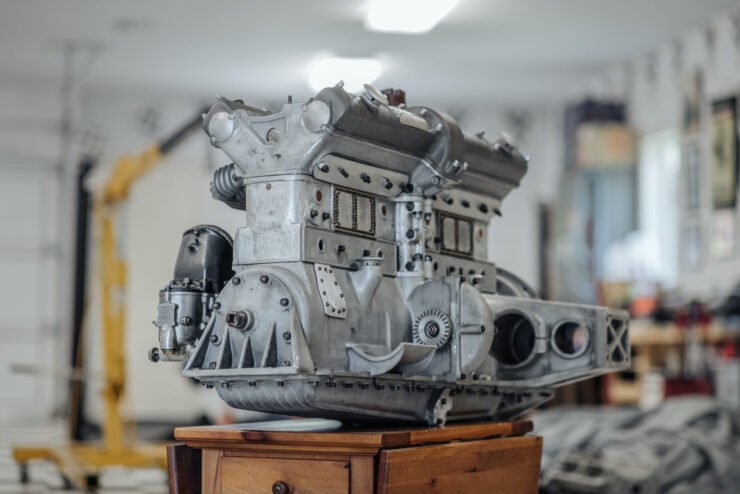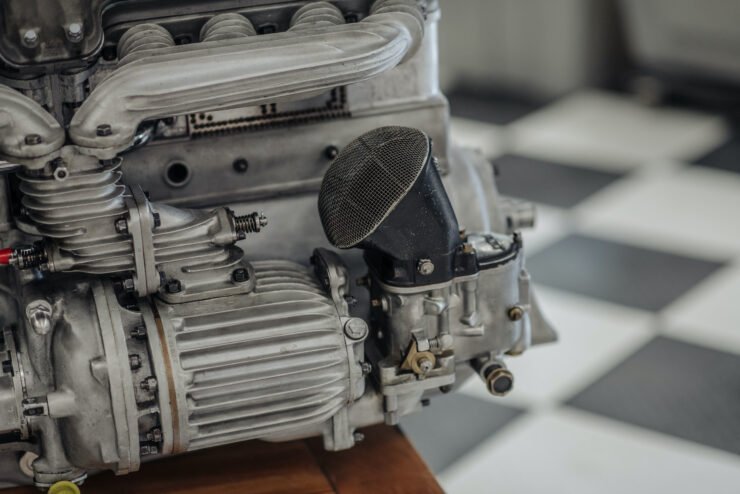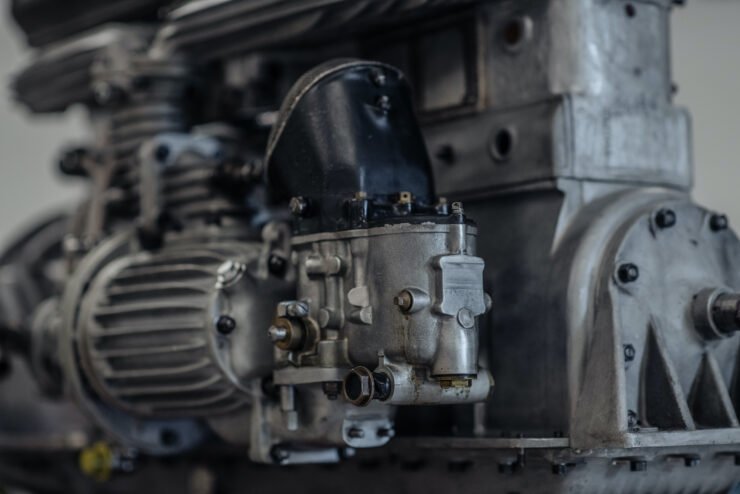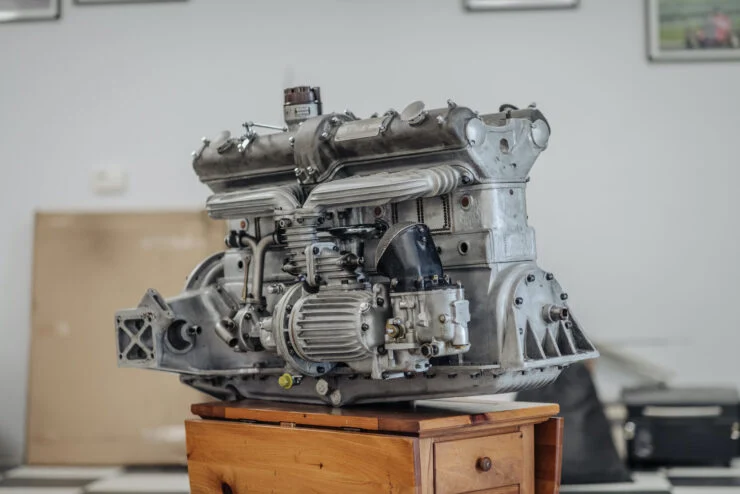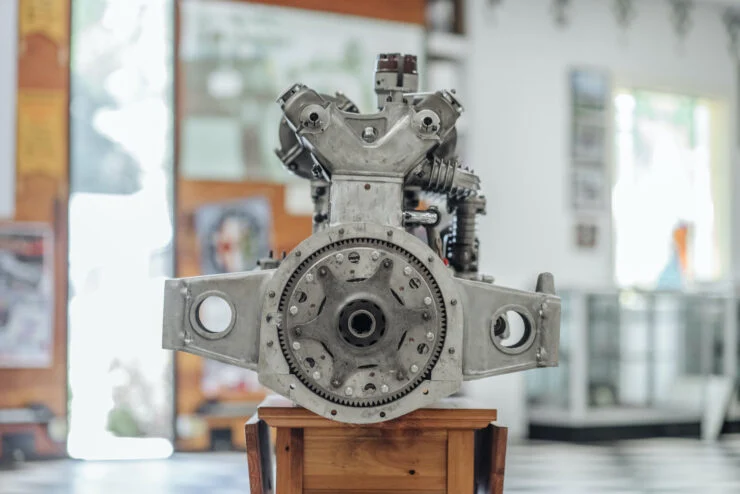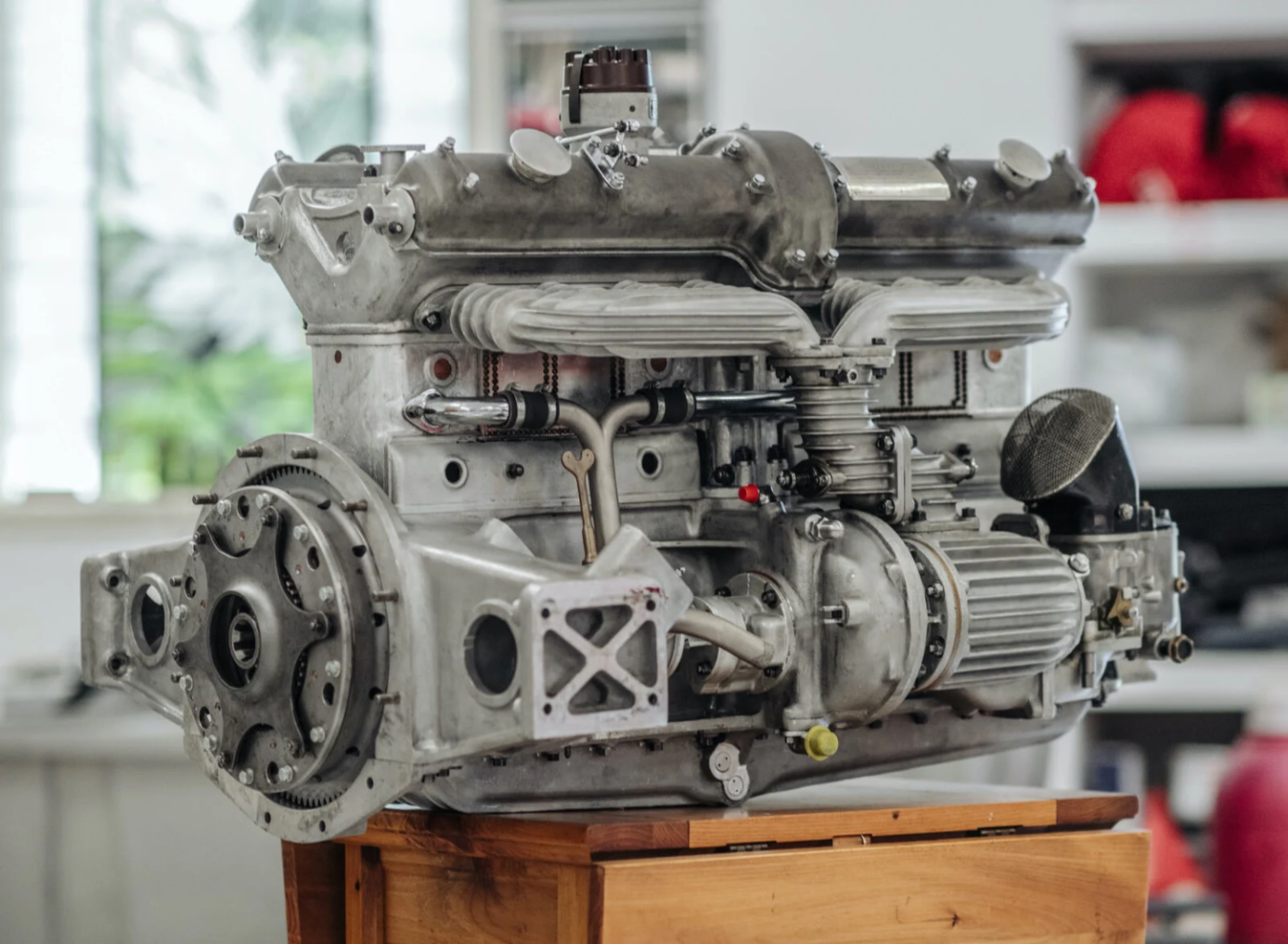-
Posts
4,364 -
Joined
-
Last visited
Content Type
Profiles
Forums
Gallery
Events
Everything posted by Egilman
-
Personally, if I was building this, I would give consideration to putting the engine on a stand by itself.... In it's day, it was considered a piece of engineering art, all by itself... Originally developed for Formula Racing in '31 the engine made the Grand Touring Spider one of the most desirable cars to own... The Alfa Romeo 8C engine.... (some pics) Besides, you leave the head off it would be technically inaccurate as it was a unified casting head/block as most racing roadster engines of the period were... You will lose that beautiful supercharger and intake manifold as well... Pretty isn't it...
-

Timber-framed outdoor kitchen - Cathead - 1:1 scale
Egilman replied to Cathead's topic in Non-ship/categorised builds
WE strive to produce good models, what is better training for that than producing good food.... The process is the same... {chuckle} -
The first levels were used by builders as far back as the Egyptians... (including water levels, although very cumbersome to build and use) Around the same time, builders used an A-frame level, on which a plumbline was suspended from the vertex of the A... When the feet of the A were set on the surface to be checked, if the plumb line bisected the crossbar of the A, the surface was horizontal. A variation of the A-frame level also was used. The frame of this instrument is an inverted T with a plumb line suspended from the top of the vertical stem. But in essence, this form of level had no real rival until the 17th century and was still commonly used in Europe until the middle of the 19th century.... Tubing and glass lights were first used as a basic water level in the 1600's, but they still never supplanted the frame level in common use until the spirit level was introduced in the late 1600's... Once the spirit level was perfected it was incorporated into the survey equipment of the day and supplanted all other forms of levels (including plumb bobs which the original levels were based off) for the building trades, eventually, by the mid 1800's becoming the common carpenters/builders bar level... In the 80's the water level and surveyer's transit was supplanted in the building trades by the electronic level for measuring level over distances... And today, GPS does the job on most civil engineering projects, establishing level by bouncing radar signals off a satellite in space... Although understood for over a millenium, waterlevels didn't become really practical until the mid 1600's... They didn't need clear flexible tubing to work... Besides, clear flexible tubing didn't appear until the early 1900's...
-
Very nicely done brother, and that is a good representation of that blue, but, well faded blue.... (freshly painted it was about a shade and a half bluer) The USAF museum has one of these in fresh PRU scheme, (in USAAC markings) as well... someday I'll get my example up and running.... Another one of my favorite planes...
-
My pleasure brother... but a suggestion in understanding climate.... That area is not arid, at all... more subalpine... it is dry on that rocky outcropping cause of the wind more than anything else... wind does three times more drying than the sun/heat does.... The grasses will be mid level 18"-30", there will be shrubs growing in clumps but not more than 4-5' high, taller where they are sheltered from the wind.. Very little to no exposed dirt, and what semi level patches will have is short grasses... Lots of exposed greyish/brown basalt type rock with deep cracks from weather exposure.... Its a wonderful landscape with lots of action that sets off the monolithic stones of the castle...... I think it will come out wonderful....
-

Renault RE20 Turbo by DocRob - FINISHED - Tamiya - 1/12
Egilman replied to DocRob's topic in Non-ship/categorised builds
Being as Yellow is one of the most difficult colors to spray on a model, you did a masterful job.... Surface prep is everything with car bodies, you got it down brother... -
Nice looking machine.... Matches up with the lathe very well... And btw, most job shop horizontal mills have a 4' spindle height, because most jobs are mounted by hand, the saddle height is set by the height a couple of workers could lift the work... So, at 1/12th scale, it is right on the money... The sliding beam of a Cincinnati 2MH rises to upper chest height on me, and I'm 6' tall... I'll be here when you choose the next one.... (psst, a radial arm would be perfect) Beautiful work...
-

Renault RE20 Turbo by DocRob - FINISHED - Tamiya - 1/12
Egilman replied to DocRob's topic in Non-ship/categorised builds
That's what I'm hoping.... (it's the Trumpy 1/12th scale version) I did the Revell Monogram version when I was a kid and fell in love with it, it will be a nice fit with the Tyrrell P-34 in the same scale, fell in love with that blue and yellow paint job when I built it as a kid as well... -

Renault RE20 Turbo by DocRob - FINISHED - Tamiya - 1/12
Egilman replied to DocRob's topic in Non-ship/categorised builds
Thank you for the info on the fittings and tubes... I'll need some when I start my '66-'67 GT 40 MkII... Thank you very much... -
Very true my friend... (as far as the sideways images, if your working with windows it's easy to fix... Click on the pic in windows explorer, it will open in windows photo viewer, there is a button to turn the pic in the direction you need, then close it, it will save in the orientation you set for it, then upload it)
-
#8 goes straight down... That would be the front rank cylinder directly opposite the Propeller Governor Drive which is on top of the gear housing... Pratt Whitney R-1830-75 -98 Service Instructions.pdf P W R-1830 Twin Wasp Maintenance Manual.pdf Yes #1 would be the upward cylinder on the back rank...
-

Renault RE20 Turbo by DocRob - FINISHED - Tamiya - 1/12
Egilman replied to DocRob's topic in Non-ship/categorised builds
Necessity is the mother of invention, or, in this case, innovation... -

Hawker Typhoon 1b "Car Door" by AJohnson - Airfix - 1:24
Egilman replied to AJohnson's topic in Non-ship/categorised builds
A site that's been around since almost the beginning of the internet, it's real... It's just one of my resources for searching the net... like anything else sometimes it's a boon sometimes it's a bust... overall, it's a pretty good site if your looking for something specific... They have both editions of it, the first edition and the revised second edition... -

Hawker Typhoon 1b "Car Door" by AJohnson - Airfix - 1:24
Egilman replied to AJohnson's topic in Non-ship/categorised builds
I'm down brother, wouldn't miss this for the world... -
It was agreed early on in the war period that patent enforcement was suspended for the duration and anyone showing a need for the technology would be handed it... It was part of the original Anglo-American mutual support pact in place before lend lease..... It's partly the reason why the cavity magnetron was shipped to America from England in 1940... The public story was that they didn't want to lose it to the Germans if they lost the battle of Britain, the real story was that current US radars although good, (best in the world) were not good enough... The magnetron was sent to MIT to integrate it into what we had already developed.... Technology transfer in wartime is an absolute... There were no commercial secrets allowed to be held during the war...
-
yep, in it's most powerful incarnation it delivered 2500hp out of a 2100 lb mass... Roughly 1.2 hp per lb... which was above what was considered optimal in the aircraft industry for piston engines making it pound for pound as efficient as the P&W R2800 which was the first to deliver 1to1 hp to weight... the R2800 eventually delivered 2250 hp which put it in the same class... I would have loved to see the Sabre developed into it's maximum potential... Today it's all about fuel consumption efficiency when it come to ICE's, maximum HP is a thing of the past... In terms of relative efficiency hard to beat the Sabre or the R2800 as the kings of the hill for production engines, they were both phenomenal achievements of mechanical engineering... so we agree... {chuckle}
-
They are ancient.... A painting by DaVinci... The title is Madonna of the Yarnwinder one of two versions painted by DaVinci circa 1501 to 1507 and presented to Florimond Robertet, a secretary to King Louis XII of France. From Wiki... It's an ancient tool with many useful purposes still in use today by yarn makers...
-
Yep there were quite a few engines like that in that time period... Would have been very interesting to see the design line mature in development... There was a lot of promise in multi cylinder, multi crankshaft sleeve valve engines... Mainly cause the valve arrangements were simpler and more mechanically efficient... There was the Wright R-2160 Tornado, Pratt & Whitney X-1800, Pratt & Whitney XH-3130, and several others on this side of the pond.... The design limits of piston ICE's is the valve configuration... Flow through the combustion chamber is the limiting factor and adding mechanical complexity, (push rod valve trains) reduces efficiency... Believe it or not, sleeve valves were well known in the steam engine community back in the 1880's... Finally getting around to them in the ICE community in the late 30's isn't brilliant engineering, it illustrates how slow development of technology can happen in an environment of "this is working and people are paying for it so why change"... By the time they realized the greater efficiency of sleeve valves coupled with lower reciprocating mass, the axial flow turbojet was running... no valves and no reciprocating masses to deal with... RR continued to explore the concept into the late 50's but none of them ever took flight... The commonly held engineering belief today is that ICE's are never going to reach the efficiency of a turbine engine.... Similar to a pure turbo jet is never going to match the thrust ratio of a rotating propeller or fan (fan jet)... Engine efficiency is all about flow.... And for piston engines the amazing RR and Napier developments still represent the pinnacle of high power piston engine development...
About us
Modelshipworld - Advancing Ship Modeling through Research
SSL Secured
Your security is important for us so this Website is SSL-Secured
NRG Mailing Address
Nautical Research Guild
237 South Lincoln Street
Westmont IL, 60559-1917
Model Ship World ® and the MSW logo are Registered Trademarks, and belong to the Nautical Research Guild (United States Patent and Trademark Office: No. 6,929,264 & No. 6,929,274, registered Dec. 20, 2022)
Helpful Links
About the NRG
If you enjoy building ship models that are historically accurate as well as beautiful, then The Nautical Research Guild (NRG) is just right for you.
The Guild is a non-profit educational organization whose mission is to “Advance Ship Modeling Through Research”. We provide support to our members in their efforts to raise the quality of their model ships.
The Nautical Research Guild has published our world-renowned quarterly magazine, The Nautical Research Journal, since 1955. The pages of the Journal are full of articles by accomplished ship modelers who show you how they create those exquisite details on their models, and by maritime historians who show you the correct details to build. The Journal is available in both print and digital editions. Go to the NRG web site (www.thenrg.org) to download a complimentary digital copy of the Journal. The NRG also publishes plan sets, books and compilations of back issues of the Journal and the former Ships in Scale and Model Ship Builder magazines.

